How to Use Your Fridge’s Crisper Drawer(s) Correctly
I think Martha Stewart is a gift to mankind. There’s no sarcasm here—she consistently teaches me all sorts of things that I’ve had no idea about. For instance, just the other day she taught me how to use my fridge’s crisper drawers correctly. What a woman!
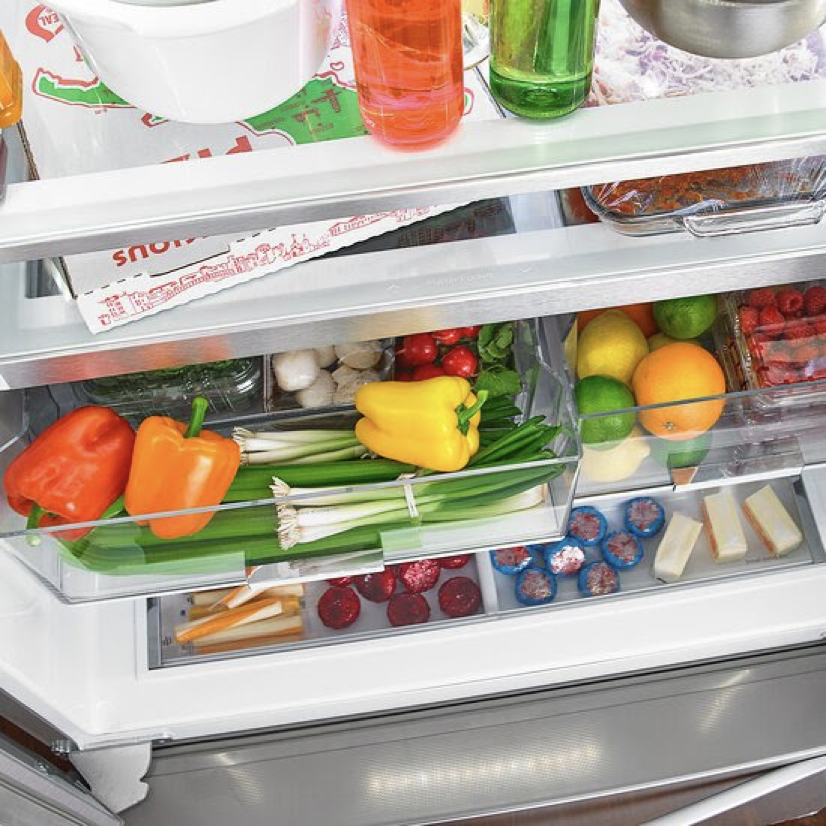
By way of comfort, she did add the soothing note that in the midst of my crisper drawer faux pas, I’m not alone. In Martha’s article on the topic, she quoted Mary Kay Bolger, senior product development manager of refrigeration at Whirlpool: "In the many years of research we've done, we've found over and over again that crisper drawers seem to be a mystery to the consumer in terms of how they work or how they should be set."
While crisper drawers might seem like the perfect place to store beer or odds-and-ends that don't fit on refrigerator shelves, they're actually meant for fresh produce (while a crisp beer might sound inviting, crisp lettuce is the goal). When used correctly the crisper drawer can extend the life of your fruits and vegetables.
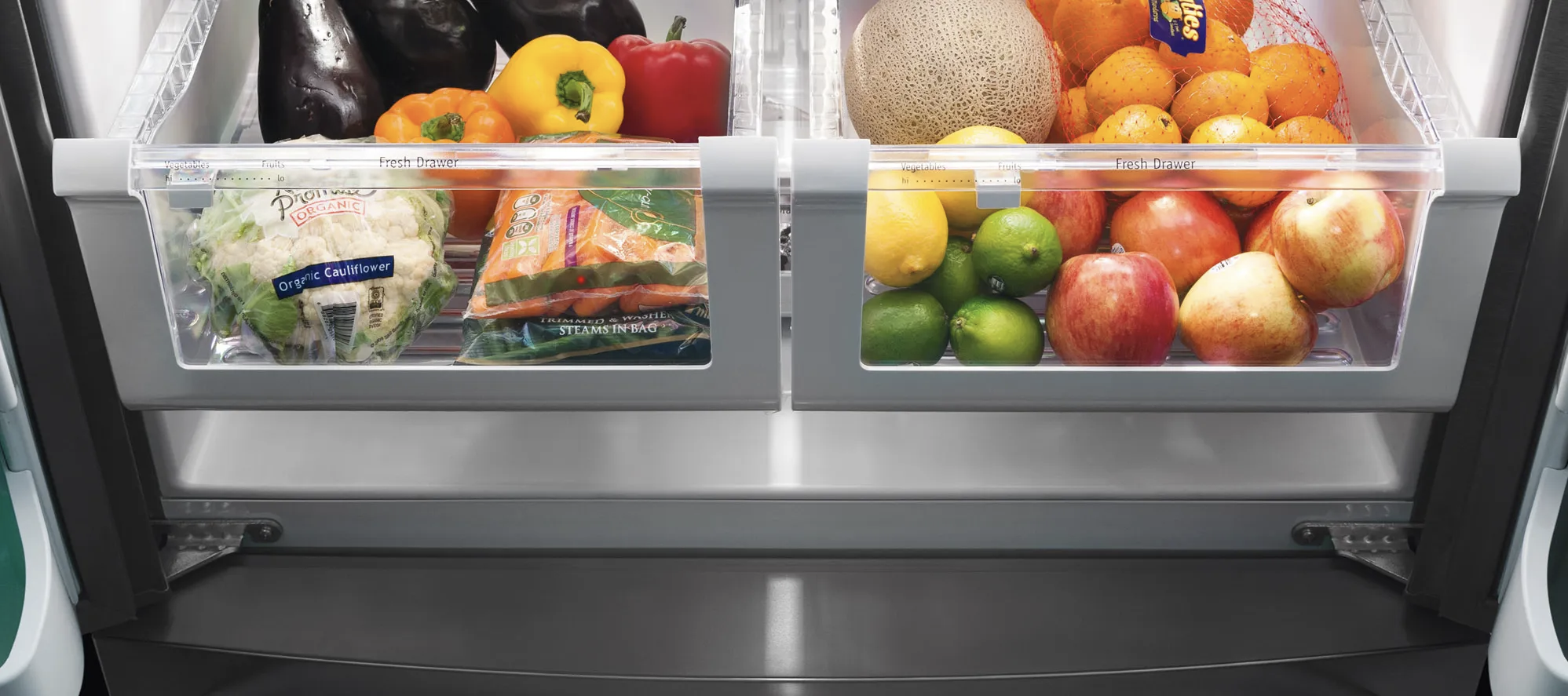
To learn how to best use this section of the fridge, the folks in Martha’s test kitchen consulted Bolger for best practices on how to get the most out of your crisper drawers. Here’s what they learned:
These are bins that offer a more humid environment than the rest of the refrigerator interior. Most are adjustable between high and low through a sliding humidity control setting that opens or closes a small vent in the drawer. It's all about the airflow in and out of the drawer. The HIGH HUMIDITY setting closes the vent, shutting the air off and producing more humidity.
Here’s where you should store: thin-skinned or leafy vegetables that are prone to wilting or losing moisture quickly, such as asparagus, fresh herbs, and greens. An excellent idea is to wash, spin dry, and wrap lettuces in clean kitchen towels as soon as you get them home, then store them in the crisper drawer. They’ll stay crisp and fresh much longer this way than if you just leave them in the clamshell container or plastic bag. Plus, they're clean, dry, and ready to eat whenever I want a salad.
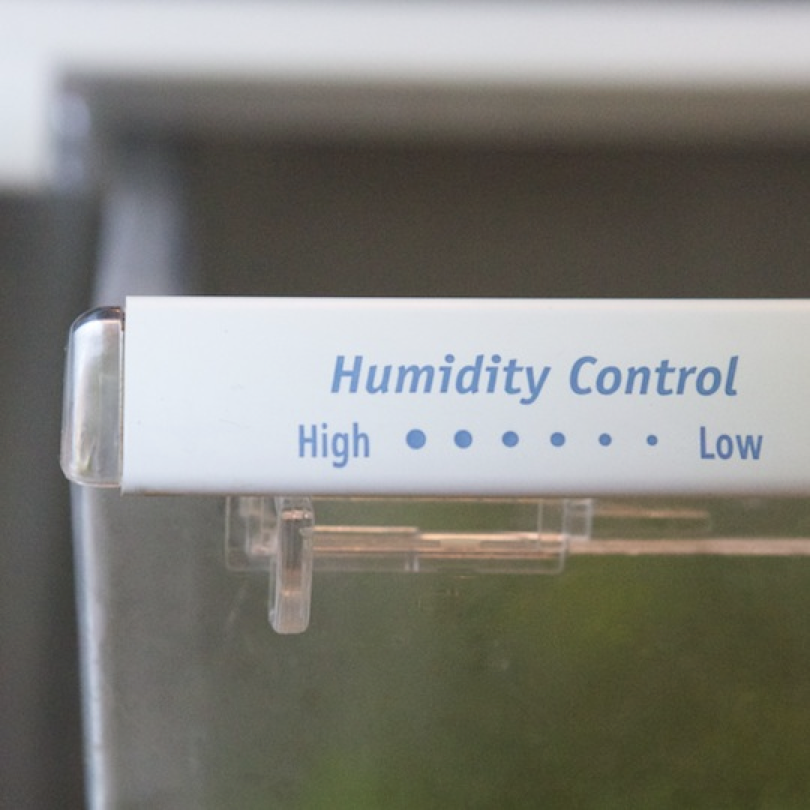
LOW HUMIDITY means the vent is completely open and air can move freely. Here you should store apples, pears, stone fruits, and melons—anything that gives off high levels of a gas called ethylene that speeds up the ripening process.
The open vent in the low humidity setting allows the gas to escape, which prevents the fruit from moving to quickly into the over-ripe to rotten stage too quickly. Isolating these fruits in the low-humidity bin also keeps them from spoiling the ethylene-sensitive fruits and vegetables in the high-humidity bin. If you don't have humidity controls, it's still a good idea to separate your fruits and vegetables based on ethylene production. If you only have one crisper drawer, store the ethylene-emitting fruits in a bin somewhere else in the fridge, and make sure this bin has a tight seal.
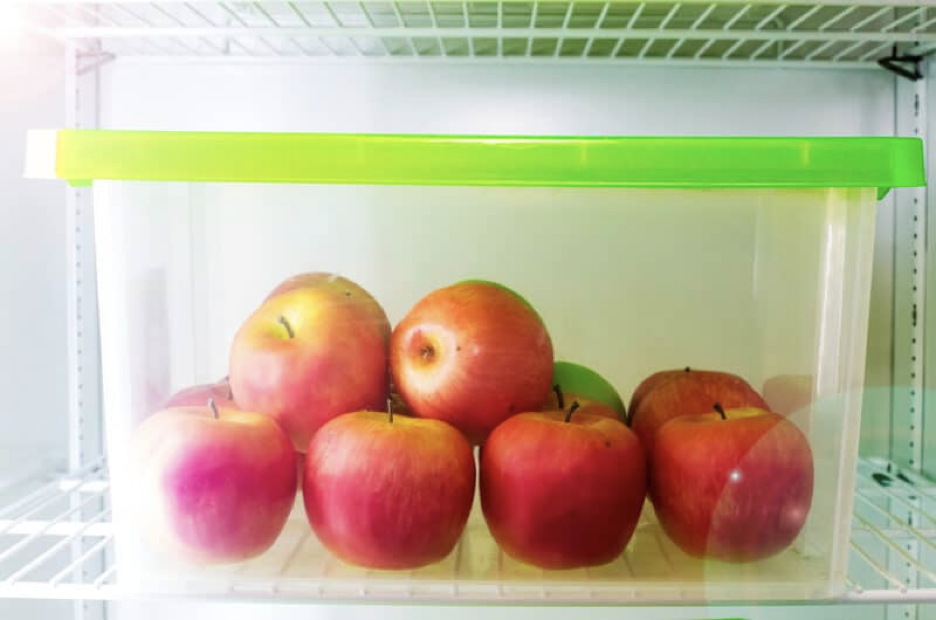
Important to know: If your drawers don't have any controls, they are simply high-humidity crispers. If you have two crisper drawers without controls, it's best to designate one as high and the other as low humidity (for the above-mentioned reasons).
Once you have your produce separated, Bolger recommends "organizing your drawers from front to back. Placing items that have a shorter shelf life in front will ensure that you see them first and use them before they spoil."
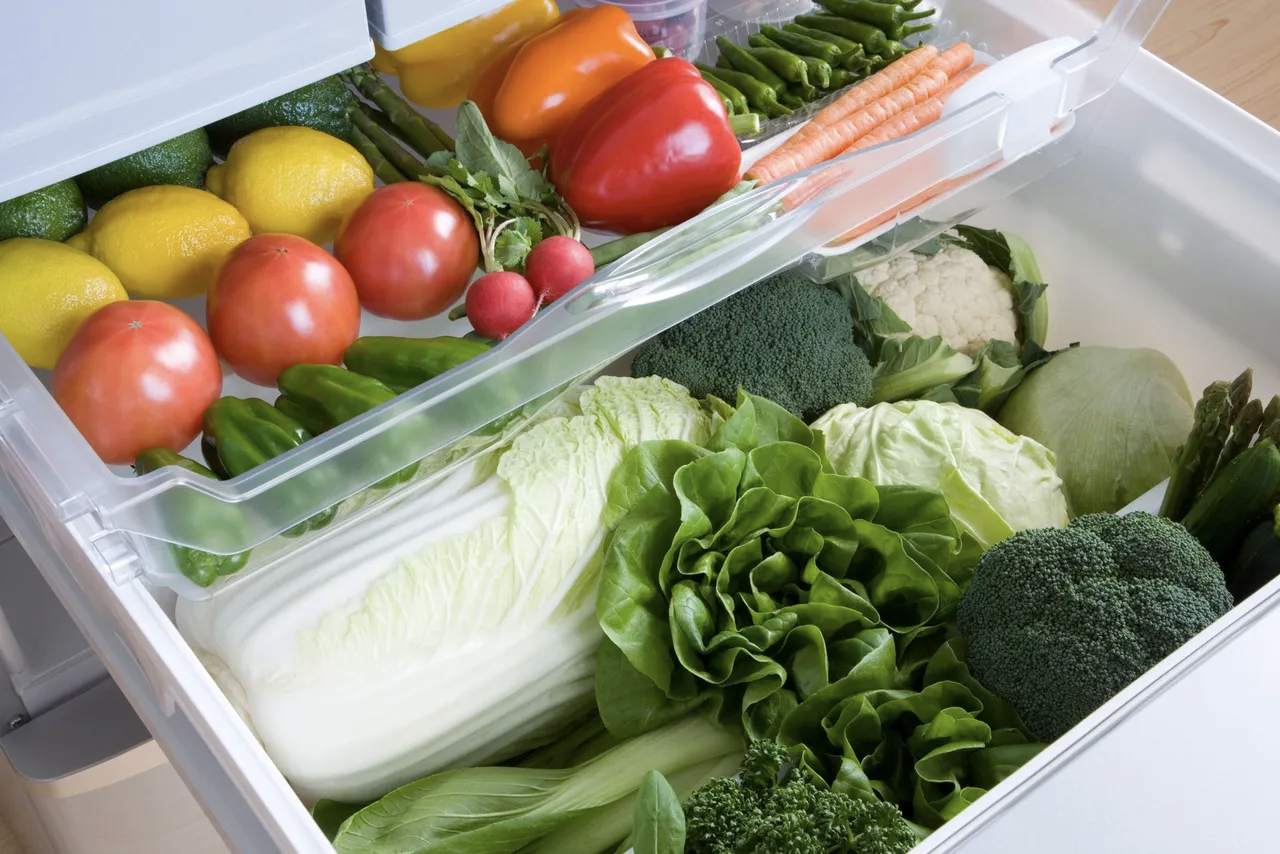
Lastly, if you don't have enough produce to fill two bins, Martha has another suggestion: "Use one of your crisper drawers for raw meat, fish, and poultry—specifically the drawer at the bottom of the fridge. It’s particularly cold and there's no chance of cross-contamination."

By way of comfort, she did add the soothing note that in the midst of my crisper drawer faux pas, I’m not alone. In Martha’s article on the topic, she quoted Mary Kay Bolger, senior product development manager of refrigeration at Whirlpool: "In the many years of research we've done, we've found over and over again that crisper drawers seem to be a mystery to the consumer in terms of how they work or how they should be set."
While crisper drawers might seem like the perfect place to store beer or odds-and-ends that don't fit on refrigerator shelves, they're actually meant for fresh produce (while a crisp beer might sound inviting, crisp lettuce is the goal). When used correctly the crisper drawer can extend the life of your fruits and vegetables.

To learn how to best use this section of the fridge, the folks in Martha’s test kitchen consulted Bolger for best practices on how to get the most out of your crisper drawers. Here’s what they learned:
These are bins that offer a more humid environment than the rest of the refrigerator interior. Most are adjustable between high and low through a sliding humidity control setting that opens or closes a small vent in the drawer. It's all about the airflow in and out of the drawer. The HIGH HUMIDITY setting closes the vent, shutting the air off and producing more humidity.
Here’s where you should store: thin-skinned or leafy vegetables that are prone to wilting or losing moisture quickly, such as asparagus, fresh herbs, and greens. An excellent idea is to wash, spin dry, and wrap lettuces in clean kitchen towels as soon as you get them home, then store them in the crisper drawer. They’ll stay crisp and fresh much longer this way than if you just leave them in the clamshell container or plastic bag. Plus, they're clean, dry, and ready to eat whenever I want a salad.

LOW HUMIDITY means the vent is completely open and air can move freely. Here you should store apples, pears, stone fruits, and melons—anything that gives off high levels of a gas called ethylene that speeds up the ripening process.
The open vent in the low humidity setting allows the gas to escape, which prevents the fruit from moving to quickly into the over-ripe to rotten stage too quickly. Isolating these fruits in the low-humidity bin also keeps them from spoiling the ethylene-sensitive fruits and vegetables in the high-humidity bin. If you don't have humidity controls, it's still a good idea to separate your fruits and vegetables based on ethylene production. If you only have one crisper drawer, store the ethylene-emitting fruits in a bin somewhere else in the fridge, and make sure this bin has a tight seal.

Important to know: If your drawers don't have any controls, they are simply high-humidity crispers. If you have two crisper drawers without controls, it's best to designate one as high and the other as low humidity (for the above-mentioned reasons).
Once you have your produce separated, Bolger recommends "organizing your drawers from front to back. Placing items that have a shorter shelf life in front will ensure that you see them first and use them before they spoil."

Lastly, if you don't have enough produce to fill two bins, Martha has another suggestion: "Use one of your crisper drawers for raw meat, fish, and poultry—specifically the drawer at the bottom of the fridge. It’s particularly cold and there's no chance of cross-contamination."
Sources:
- www.marthastewart.com
- www.epicurious.com
- www.thekitchn.com
- www.morningchores.com
- www.fridgematez.com
 Alice Osborne
Alice Osborne
Weekly Newsletter Contributor since 2006
Email the author! alice@dvo.com
